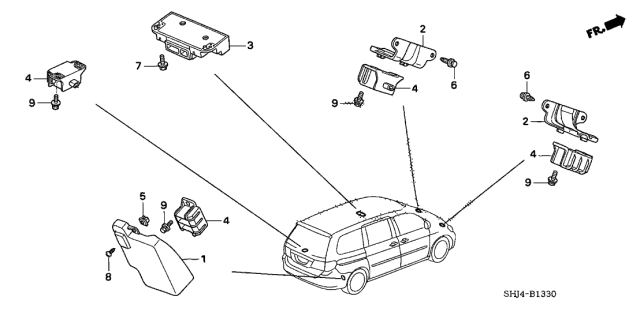

So when the weather gets colder, the tire pressure decreases, which could trigger TPMS warning light in Odyssey. The air, like most other substances, expands when heated and contracts when cooled. When analyzing WheelsJoint’s statistical data, it has been observed that there is sharp rise in the number of searches for TPMS warning light causes at the start of every winter season, about three times higher as compared to mid summer season. Chilly weather can turn on low tire pressure light in OdysseyĬold weather is one of the most common cause for low tire pressure warning light in Honda Odyssey.

You can view tire pressure information in Honda Odyssey by going to Maintenance > Tire Pressure in the instrument cluster display settings. After the TPMS warning light turns off, and the vehicle has been parked for a few hours, reduce the tire pressure to the factory recommended value. If the low tire pressure light does not turn off automatically after reinflating the tires in your Odyssey, increase the tire pressure by 5 psi on top of the factory recommended value, and drive your vehicle for at least 10 miles (16 km). There is no reset button like the one you see in vehicles with indirect TPMS system which uses ABS sensors to detect low tire pressure. There is no need to reinitialize the TPMS system in order to reset the warning light. Honda Odyssey uses the direct method for monitoring tire pressure, which means a pressure sensor actively records the internal pressure and air temperature of the tire on each wheel. Resetting the TPMS warning lightĪfter you have inflated all the tires to the correct air pressure, the TPMS warning light will turn off automatically. See the sidewall of any tire on your Odyssey to find the tire size information. These are official cold tire pressure values for Odyssey from Honda. If you can’t find the label, check the size of your tire which is mentioned on the sidewall of the tire, and match it to the tire pressure information shown below.
2008 honda odyssey tpms reset driver#
Reinflate all the tires of your Odyssey to the manufacturer specified air pressure, which is mentioned on the vehicle placard or tire inflation pressure label usually located on the B-pillar or the edge of the driver door. Driving on a significantly under-inflated tire causes the tire to overheat and can lead to tire failure.

When the amber colored TPMS warning light turns on in your Odyssey, stop your vehicle when it is safe to do so and check tire pressure on all the wheels, including the spare wheel (if your vehicle has one).


 0 kommentar(er)
0 kommentar(er)
